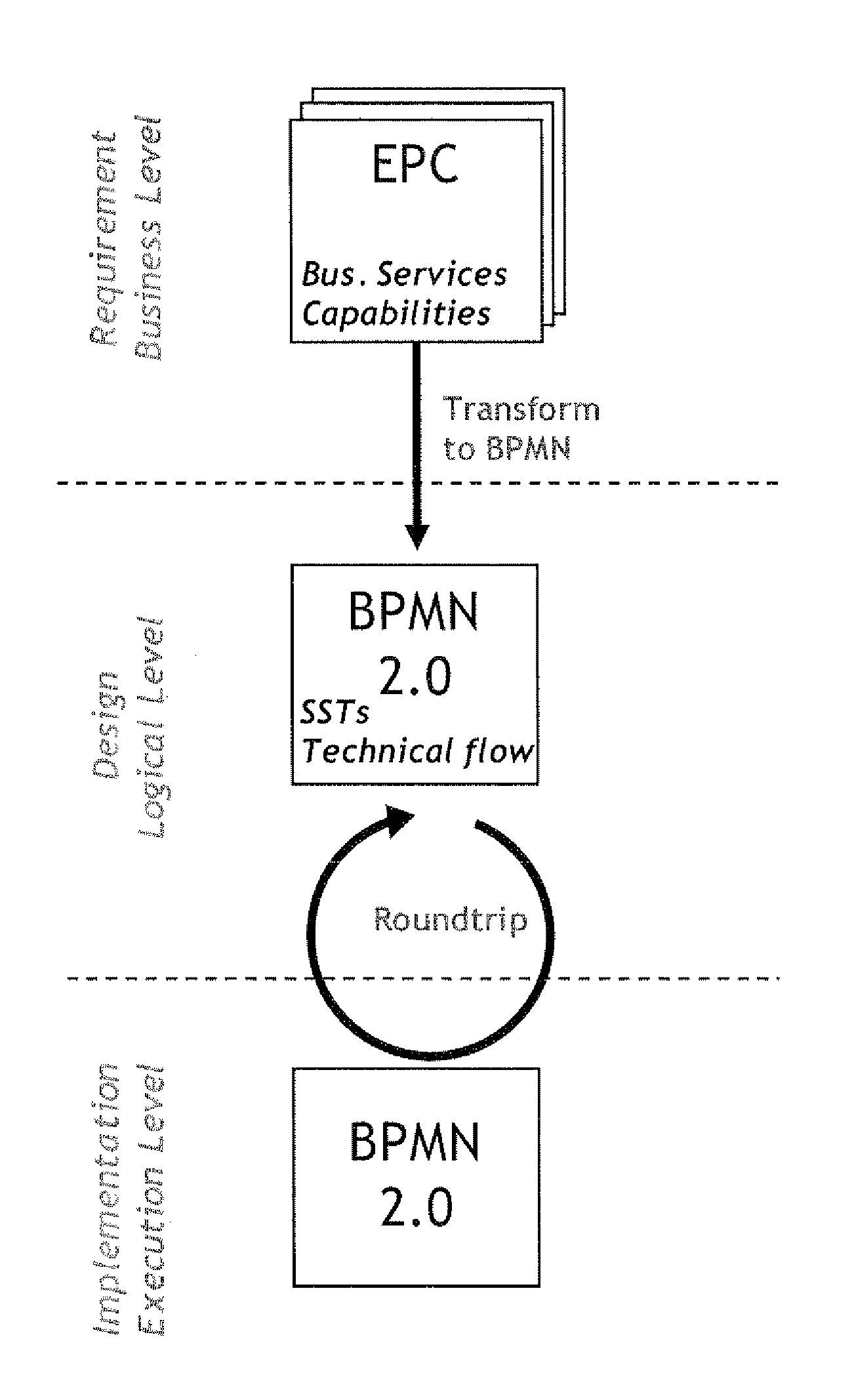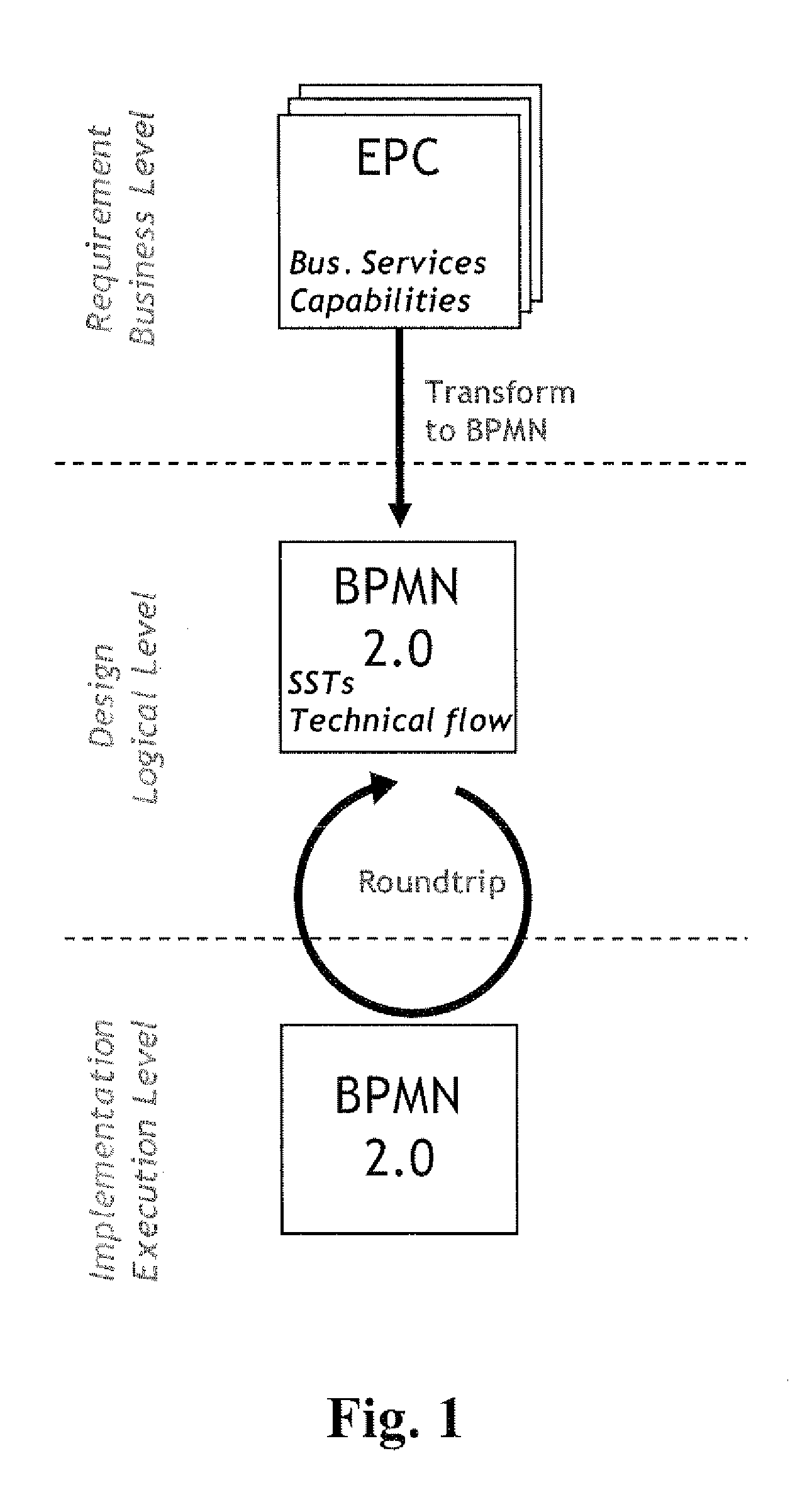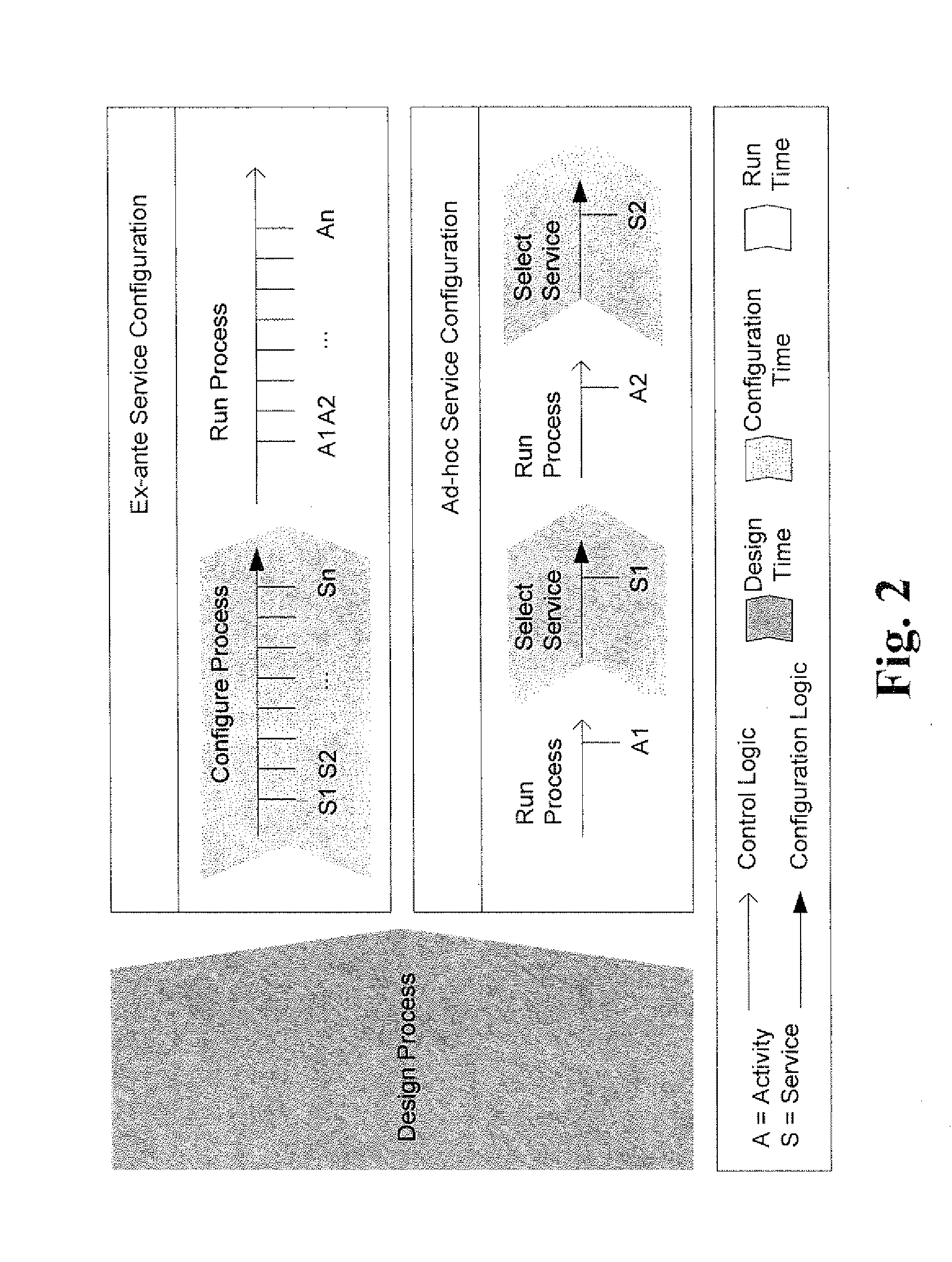[0002]A business process is a continuous series of enterprise tasks, undertaken to help create valuable output for an internal or external customer. A business process gives organizational actions structure across time, place, and / or functions. Business processes in general represent one way to describe, analyze, execute, and / or control operational structures across departments, business units, and / or even business partners.
Business process management (BPM) relates to, inter alia, the continuous improvement of business processes, e.g., for the sake of overall business success. Amongst others,
software-enabled business process
automation is an instrument that may help increase efficiency and effectiveness of process execution.
Business process models have been established to specify processes within BPM projects. For automation purposes, for example, business process models may
help document and structure conceptual
process requirements (business view) prior to their transformation into
executable (code-based) specifications (technical view). Both modeling and transformation are typically involved in sound process automation.
[0004]
Business process transformation helps map the
control flow described in a conceptual process model into a technical business process model. Here, it may be complemented by
technical information, e.g., process variables for storing
process information during execution, online forms for user interaction, exceptions and their handling, communication patterns (asynchronous / synchronous), consistent
data exchange, etc. To make a process
executable, process activities may be assigned to automated software functionality or to semi-automated user interfaces, or the like. Depending on the chosen
modeling language and the targeted deployment
system, this transformation may result in a second graphical diagram (e.g., BPMN 2.0, etc.) or directly into a code-based script (e.g., XPDL, BPEL, etc.). The resulting technical process models may be deployed into the
process engine of a
business process management system (BPMS) or
workflow management system (WFMS), which allows for starting, executing, and tracking instances of the process efficiently.
[0006]Conceptual processes may be mapped out in different tool environments rather than technical processes. The linguistic translation task thus may be complemented by a technical synchronization. Both tasks may be kept separated as much as possible to reduce complexity.
[0012]Most recently, service-oriented architectures (SOAs) meet this integration challenge by exposing and integrating remote software functionality through well-defined software service interfaces. Early proponents thought of SOA as a specific style of distributed software architectures based on the so-called “find-bind-execute” relationship between service providers and consumers. More recent notions advance this integration view towards the potential SOA offers for business process automation and therefore helped position process automation into the center of the SOA discussion. The ability to compose services loosely opens new avenues to implementing business processes flexibly following dynamic business requirements. The adoption of standardized service interfaces allows for reusing services in different business processes, as well as flexibly replacing services according to evolving business requirements. In this sense, SOA has been considered as a paradigm for organizing and utilizing distributed capabilities that may be under the control of different ownership domains. Scientific discourse and best practices of service-oriented architectures provide a number of service-oriented design principles. While the SOA approach reinforces well-established, general
software architecture principles of interface-orientation,
interoperability, autonomy and
modularity, it also adds additional themes of process-orientation. Thus, service-oriented design helps improve business process flexibility by the separation of process structure, e.g., process flow, and process institutionalization, e.g., selection of service capabilities conducting process activities.
[0014]The notion of
hybrid systems has gained public attention in the domain of
car manufacturing, where
hybrid vehicles are considered vehicles that use two or more distinct energy sources or propulsion devices to move the vehicle.
Hybrid electric vehicles combine internal
combustion engines and electric motors to attempt to strike a balance between ecological and dynamic aspects of driving. In information systems (IS) research and related disciplines, hybridity has been attributed to specific information systems, algorithms, and computing devices, as well as of business and organizational strategies. As with the
hybrid vehicle example, hybrid information systems combine different approaches, promising “the best of both worlds.” This combination of distinct approaches helps ripen situational benefits and compensate for situational drawbacks. In business processes, diverse technical and human resource capabilities may also represent those alternative subsystems (socio-technical hybridity).
[0026]Thus, it will be appreciated that there is a need in the art for improved service-oriented
process configuration techniques, e.g., that help connect service-oriented process configuration with the runtime of BPMS. Such techniques may advantageously help keep track of multiple supportive services and their logical dependencies (e.g., in connection with a more realistic n-to-m relationship between process steps and software services) so as to support dynamic service deployment both in the future and on-the-fly.
 Login to View More
Login to View More  Login to View More
Login to View More 


